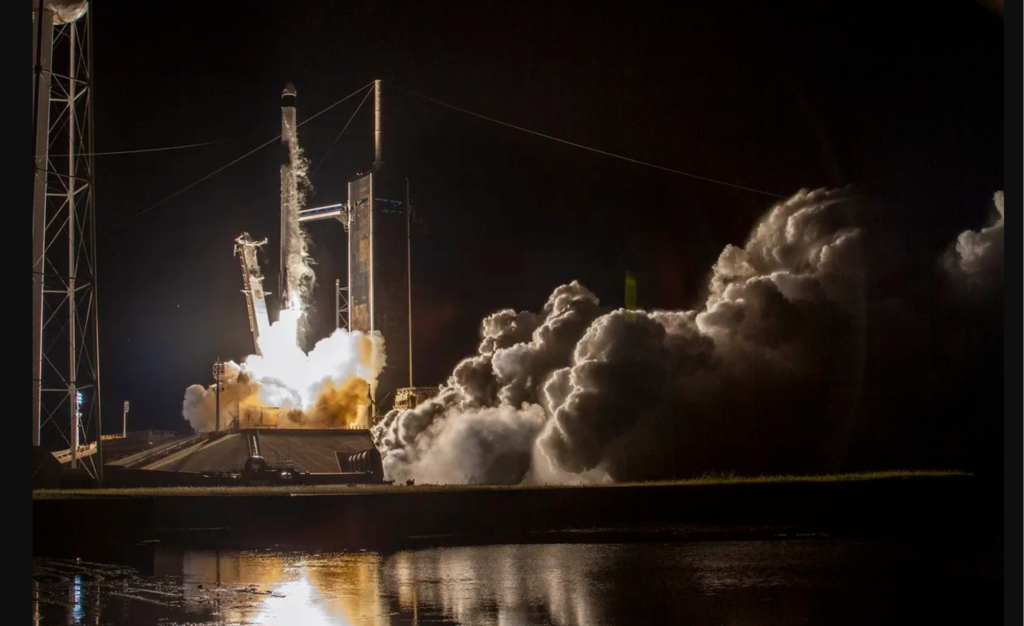Space rocket launches are awe-inspiring events that propel humanity into the cosmos. However, beyond the excitement and scientific progress, these launches have significant environmental and geographical consequences. As rockets blast off, they transform their launch zones in ways that shape our planet and our future. Let’s explore the impact of space rocket launches and how they reshape the Earth.
The Launch Zones: Before and After
- Before Launch:
- Pristine Landscapes: Launch zones are often located in remote areas, chosen for safety and minimal population density.
- Natural Habitats: These regions may harbor unique ecosystems, wildlife, and fragile habitats.
- During Launch:
- Heat and Noise: Rockets generate intense heat and noise during liftoff. The ground trembles, and nearby structures experience stress.
- Chemical Exhaust: Rocket engines emit exhaust gases containing toxic compounds. These chemicals disperse into the atmosphere.
- After Launch:
- Scorched Earth: The launchpad area becomes scorched and altered. Vegetation is often destroyed.
- Chemical Residues: Toxic residues from rocket propellants linger in the soil and water.
- Infrastructure: Launch facilities, roads, and support structures transform the landscape.
Also read : The Galaxy’s Magnetic Field Has Been Detected 11 Billion Light-Years Away, Making It The Farthest Ever
Environmental Impact
- Ozone Layer: Rocket launches release nitrogen oxides (NOx) that can damage the ozone layer, affecting climate and UV radiation levels1.
- Air Pollution: Rocket exhaust contributes to air pollution, especially near launch sites.
- Water Contamination: Chemical runoff contaminates nearby water bodies.
- Wildlife Disruption: Launch activities disturb local fauna, affecting migration patterns and breeding grounds.

image source: space.com(Space Rocket Launches)
Mitigation Efforts
- Site Selection: Choosing launch sites carefully minimizes ecological impact.
- Cleaner Propellants: Research focuses on greener propellants with reduced toxicity.
- Recovery and Reuse: Reusable rockets reduce waste and minimize environmental harm.
- Environmental Monitoring: Regular assessments track changes in launch zones.
The Future

image source: space impulse(Space Rocket Launches)
- Space Tourism: As space tourism grows, launch zones will adapt to accommodate commercial flights.
- Off-World Launches: Moon and Mars missions will transform extraterrestrial landscapes.
In the cosmic ballet of exploration, our launch zones evolve – a testament to human ingenuity and our responsibility to protect our planet.
Conclusion: Launch Zones as Gateways to the Cosmos

image source: spacex
As humanity continues to reach for the stars, the areas transformed by space rocket launches stand as gateways to the cosmos. While these zones undergo significant changes, the advancements in technology and growing environmental awareness pave the way for a more sustainable and harmonious coexistence between our pursuit of space exploration and the delicate ecosystems of our home planet.
Frequently Asked Questions (FAQ) – The Impact of Space Rocket Launches
How are launch zones selected for space rocket launches?
Launch zones are selected based on factors such as geographic location, safety considerations, proximity to the equator, and logistical infrastructure. Coastal sites are often preferred for their proximity to open water.
What environmental impact do space rocket launches have on vegetation and wildlife?
The extreme heat, vibrations, and exhaust gases from rocket launches can severely impact plant life in the immediate vicinity of a launch pad. Launch zones are typically situated in sparsely populated or uninhabited areas to minimize the impact on ecosystems and wildlife.
How do rocket launches affect air and water quality?
The combustion of rocket propellants releases various gases into the atmosphere, contributing to temporary air pollution. Launches near coastlines may impact water quality due to the introduction of contaminants into the ocean. Strict environmental regulations are followed to minimize these effects.
What infrastructure is involved in the transformation of launch zones?
Launch zones require the construction of launch pads and support towers capable of withstanding immense forces. Mission control centers are also established to monitor and manage rocket launches. These facilities contribute to the economic and social development of the surrounding areas.
What economic and social impact do launch zones have on local communities?
Launch zones create employment opportunities, ranging from engineers to support staff, contributing to local economies. Additionally, they foster educational and research initiatives, providing unique opportunities for students and scientists to engage in space-related projects.
How does reusable rocket technology impact launch zones?
Reusable rocket technology is changing the landscape of launch zones by reducing both the environmental impact and the cost of space exploration. Reusability makes space exploration more sustainable in the long run.
Are there efforts to mitigate the environmental impact of space rocket launches?
Space agencies are increasingly mindful of environmental conservation. Efforts include strategic site selection to minimize impact on ecosystems and wildlife, as well as conservation programs aimed at preserving the natural surroundings of launch zones.
What educational opportunities are associated with launch zones?
Proximity to launch zones fosters educational and research initiatives. Universities and research institutions may collaborate with space agencies, providing students and scientists with unique opportunities to participate in space-related projects and research.
How does the space industry contribute to local economies?
The space industry contributes to local economies by creating jobs and fostering the development of new businesses and services. The economic impact extends beyond the immediate construction and operation of launch zones to include various related industries and services.
What considerations are taken into account for the future development of launch zones?
Future considerations include the continued development of reusable rocket technology, increased environmental conservation efforts, and a focus on sustainable practices to minimize the impact of space exploration on the surrounding environment.
References:
- The environmental impact of rocket launches: The ‘dirty’ and the ‘green’
- Ozone layer damage due to rocket launches?
Also read : Celestial Alignment: Exploring The Rare Phenomenon Of Planetary Conjunctions In Our Solar System




































